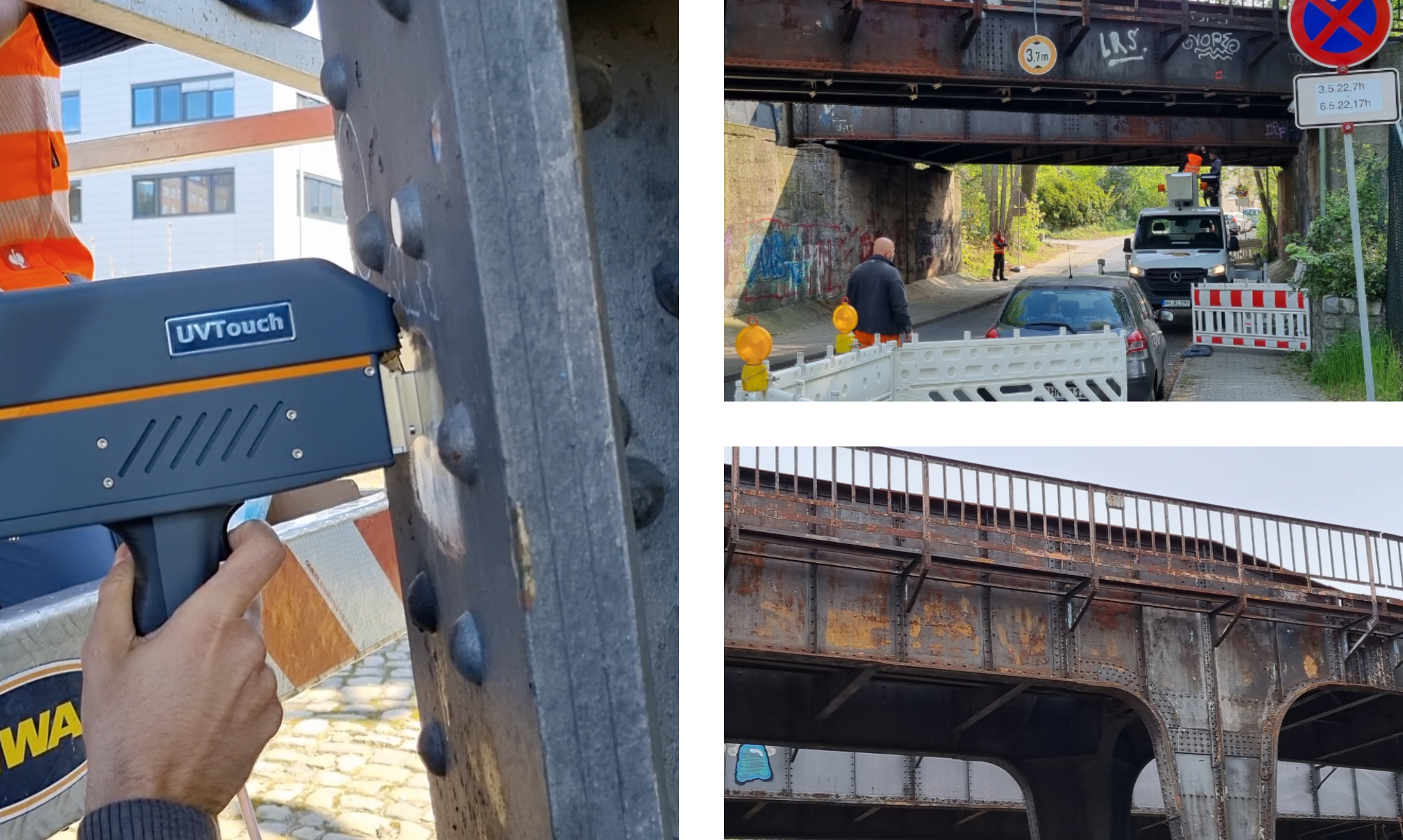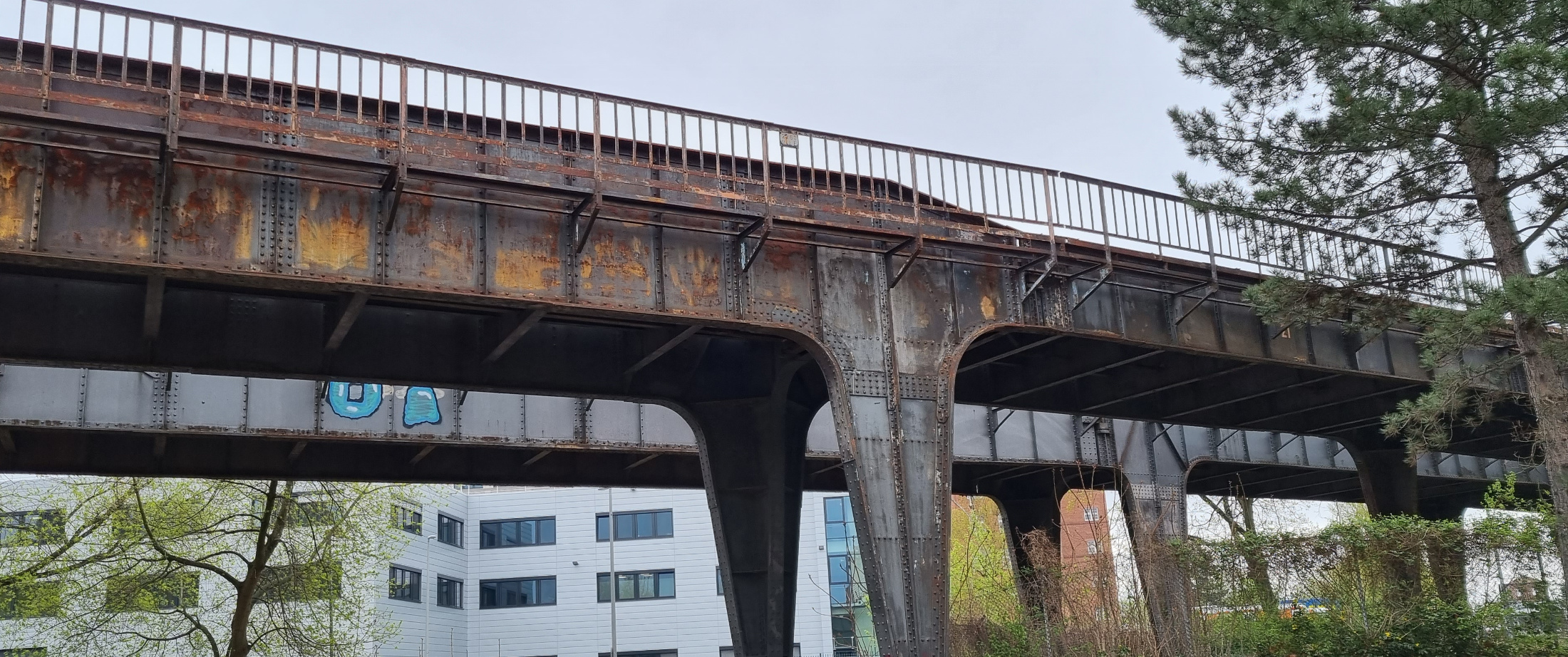
31 May Project report Siemensbahn
Preserving historic steel structures – New method for old steel identification
In the course of the i2030 initiative of the federal states of Berlin and Brandenburg, extensive measures are being undertaken to design future-oriented environmentally friendly mobility for the growing capital region. The Siemensbahn, a disused S-Bahn line in the west of Berlin, also plays an important role here. It was built between 1927 and 1929 to transport the employees of the Siemens factories to their places of work. It was closed down in the 1980s. After crossing the Spree, a large part of the line runs as an elevated railway on a typical riveted steel frame structure.
In the course of the rehabilitation planning now underway by DB Netz AG, the quality of the (old) steel is also of great importance. Usually, drill cores or other small samples are taken for this purpose. Due to the total length of the structure of around 800 m and the large number of individual riveted structural elements, this procedure is considered extremely complex in the present case and is challenging from a statistical point of view. In addition, the resulting holes damage the structure, so that drill cores can only be taken at certain, statically uncritical points.

A new method developed by IWT-Solutions AG in cooperation with the Technical University of Central Hesse (THM, Chair of Steel Construction, Prof. Dr. Bertram Kühn) in Gießen provides a remedyIn a short time and with relatively little effort, a large number of riveted individual components can be measured non-destructively with regard to the steel grade. By selecting representative component axes along the entire route, a representative image of the steel qualities in the structure can be determined from a statistical point of view.
Mobile spark emission spectroscopy (OES for short) is used. The chemical composition of the steel is measured using the special UV Touch 2 probe from Hitachi High-Tech Analytical Science GmbH. With the help of this method, up to 100 measurements per working day can be realised, depending on accessibility. IWT-Solutions AG evaluates the measurement results on the basis of its extensive know-how about the special features of industrial steel production at the time of construction. As a result, an allocation to the normatively known steel types, such as St 48 or St 34, is made. This provides the client with important information for further planning at an early stage.
In summary, it can be said that the new method provides an efficient and flexible procedure in the field of old steel rehabilitation. It is to be expected that this method can be applied to steel structures in a wide variety of application areas such as railway and road bridges, industrial structures and hydraulic engineering structures.
Further information
Information on the DB infrastructure project can be found here:


